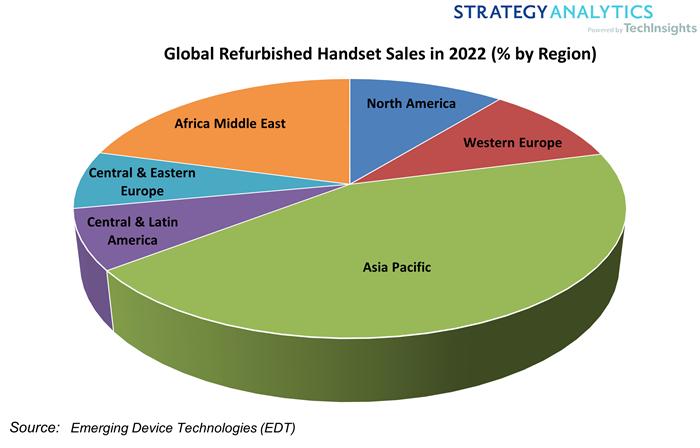Consumer electronics contribute 40% of all e-waste globally, says report

A significant contributor to the global waste volume is the mobile phone industry.
With almost one and a half billion mobile phones manufactured every year, and an inefficient production process, the industry's carbon footprint is getting increasingly bigger.
According to a report by WEEE, more than 24.5 million tons of small e-waste (consumer electronics) were produced worldwide in 2019, accounting for 40% of all e-waste around the world. The organization estimates that in 2022 around 5.3 billion mobile phones will become e-waste.
While the world is becoming awash with unwanted mobile phones that still have plenty of life left in them, the refurbished phone market is also beginning to grow as demand for refurbished phones grows globally – with inflation, and global economic crisis on the rise, refurbished phones are becoming the more affordable option.
With consumers responding enthusiastically, it is estimated that the sale of these pre-owned handsets selling as a cheaper alternative to expensive new devices, will reach 250 million in 2022, up from the 200 million sold in the previous years, and is expected to grow up to 400 million before 2030.

Major OEMs and operators are now setting up programs to give a second life to used smartphones thereby making them available as certified refurbished devices.
This move will help prevent important metals like copper, gold, silver, and other materials on these smartphones from ending up in landfills and is a step in the right direction to help the environment and combat e-waste.



![INFOGRAPHIC: Biggest Crypto Hacks Ever [2014-2025] post image](https://images.unsplash.com/photo-1660051046408-5b8f06849109?crop=entropy&cs=tinysrgb&fit=max&fm=jpg&ixid=M3wxMTc3M3wwfDF8c2VhcmNofDE1OXx8Y3J5cHRvJTIwaGVpc3R8ZW58MHx8fHwxNzQwMzg2NTI4fDA&ixlib=rb-4.0.3&q=80&w=800)


